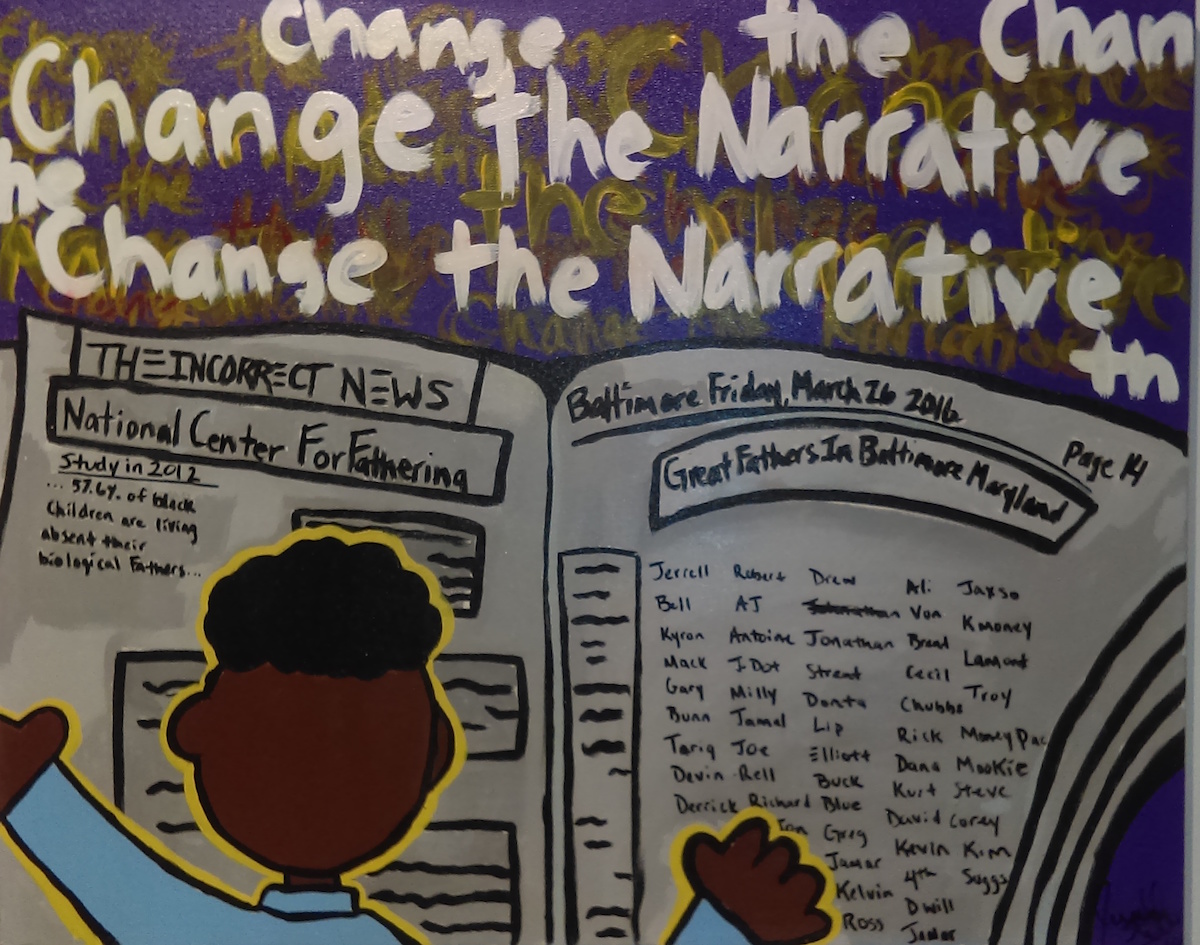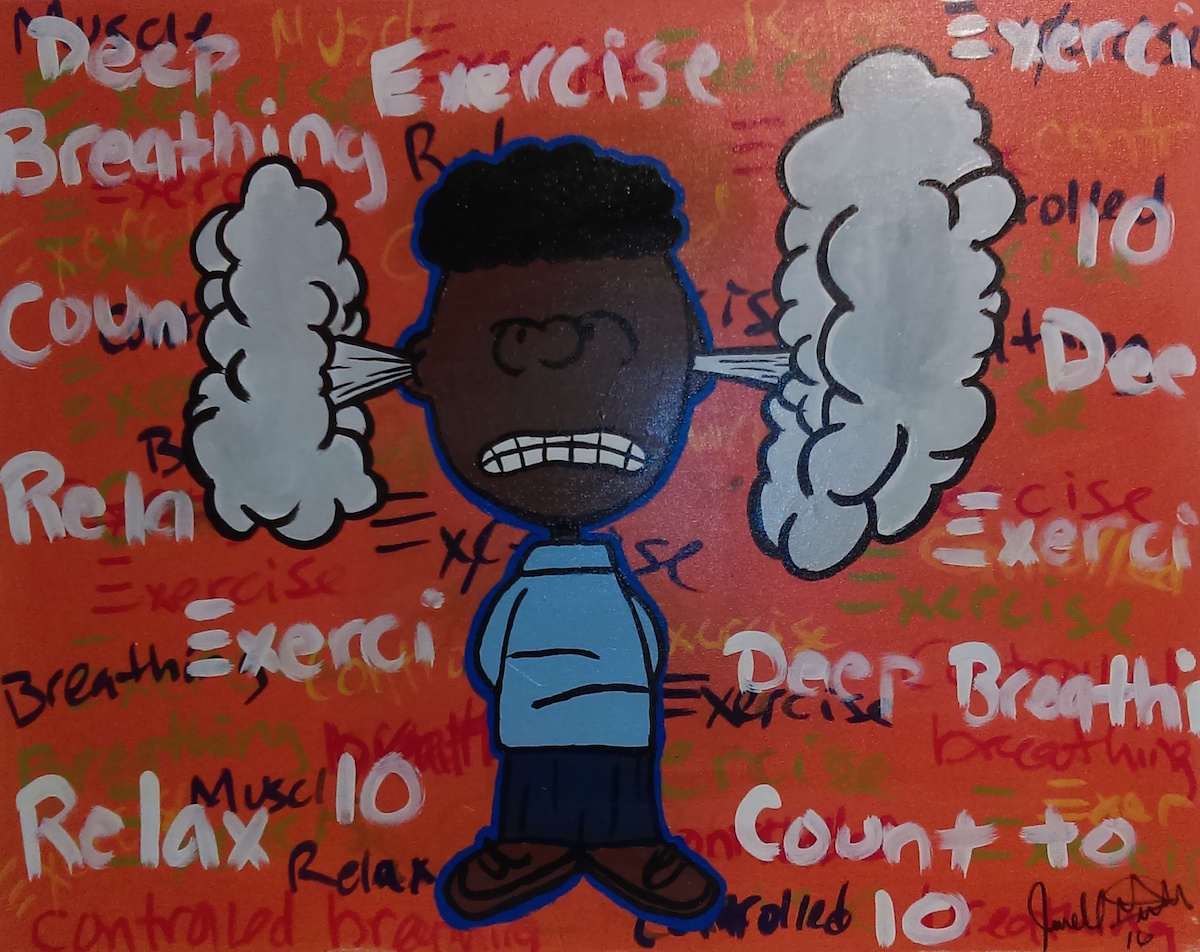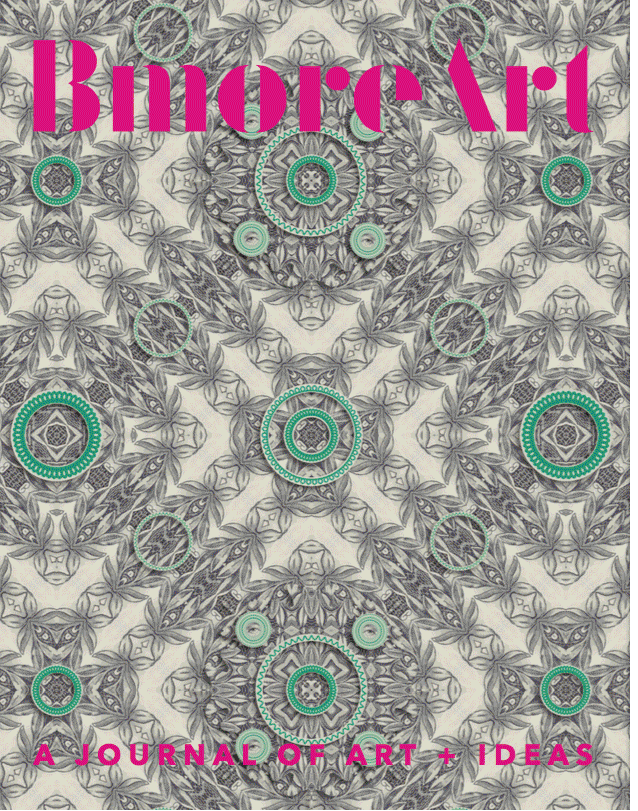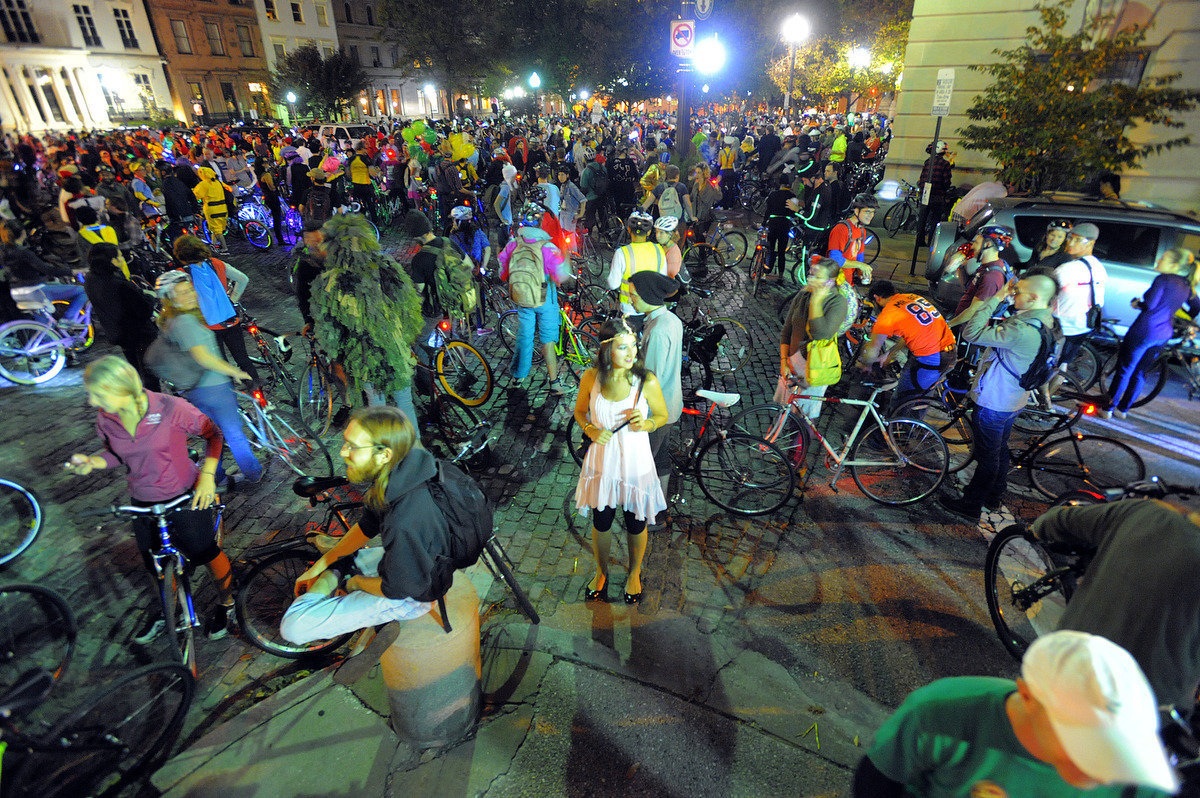Angela N. Carroll on Fathers, Brothers, Sons and the Work of Jerrell Gibbs
Can you name the lone black character in the Charles Schultz cult classic serial franchise Peanuts? I polled a small collection of friends and family and none of us could remember his name. It’s Franklin. Franklin? Yep.
Franklin is one of the earliest token characters I can recall. Tokens are flatly raced characters, whose appearance in sitcoms passively fulfills the “we are the world” rainbow diversity initiatives of the late seventies and eighties. If you think back to the popular culture and sitcoms of that era, you will notice a trend of tokenized characters.
I refer to these types of shows as broken rainbows. Broken rainbows are surface representations of diversity. They feature no more than one Black, Asian, or Latino character, and each’s narrative and dialogic contributions are limited. If you are an eighties baby, popular examples of the broken rainbows sitcom are Power Rangers, Captain Planet, Peanuts, and Saved by the Bell. Younger readers will be more familiar with Token (pun intended), from the notoriously kitsch animated comedy South Park.
Broken rainbows predate the more inclusive sitcoms of the nineties, like A Different World, Living Single, Martin and many others, who cast POC’s behind and in front of the camera. Despite great progress in the primetime network depiction of people of color as primary characters, representations of complex Asian, Latino or Indigenous protagonists in televised sitcoms are lacking. TV is Dead! Long Live TV! The shift from the traditional box to the ever-present connectivity of the internet and web series provides more hope, and a broader, more inclusive range of stories.
I was reintroduced to Franklin while walking through Fathers, Brothers, Sons, a wonderful exhibition currently on display at SpaceCamp on North Avenue. The show features the works of eighteen artists, who explore male identity, masculinity, gender, sex, intimacy, domesticity, race, and privilege. Jerrell Gibbs contributed four acrylic paintings from his collection The Peanut Gallery which prominently feature Franklin in surreal text-centric interiors. The rendering of Franklin stays true to the Schultz Peanuts aesthetic by incorporating matte primary colors and simplified character anatomy. Gibbs’ Peanut Gallery provides fresh possibilities, the pastimes and musings of Franklin, and fill in the gaps of his fragmented story.
Broken rainbows sitcoms rarely feature tokens as protagonists, except during special broadcasts. The “after school race” episodes, often correlate with annual federally mandated minority recognition holidays. In these special shows, the tokenized character is weighed with the burden of voicing the conditions of marginalized subjects, by confronting and resolving an overtly racialized conflict during a one or two part episodic dramatization. The racism displayed is simplified and easily resolved. The tokenized character is comforted by their white protagonists with a generally employed “we are all the same” affirmation. The experiences of tokens are relegated to the background until the next obligatory feature.

In contrast, Gibbs’ Peanut Gallery series humanizes and renders Franklin visible. In the paintings on view, Franklin studies, reads, fumes, and ponders his identity. When I asked Gibbs why he chose to focalize Franklin, a relatively obscure character, he responded, “Franklin is an accessible character. I used him as a bridge to connect worlds.” Gibbs use of Franklin is part of a current reclamation movement. Artists and illustrators, like @MarkusPrimeLives and Hebru Brantley similarly reimagine childhood characters and superheroes as people of color, affirming and exploring real and imagined landscapes. Gibbs’ Peanut Gallery series presents Franklin’s everyday mundane in a stylized comic-strip design, but the artist’s reimagined scenes are unexpectedly intimate and thought provoking.
In “Gender Roles,” Franklin sits in a blue room beside a pink bassinet containing a small child. Expression marks surround his head. “Gender Roles” is repetitively scrawled in white across the blue background. Is the child his? Are the expression lines surprise, angst, stress, confusion at his role as father, brother, uncle? I was most intrigued by “Identity,” a painting that peeks over Franklin’s shoulder as he reads the INCORRECT NEWS Baltimore newspaper. The left page is headlined “National Center for Fathering,” and displays fictitious statistics concerning the high percentage of black children with absentee fathers. The right page bares the headline “Great Fathers in Baltimore Maryland.” Dozens of names cover the page, but we only see the back of Franklin’s head as he scans the page. “CHANGE THE NARRATIVE” is boldly inscribed above him in the newspaper.
I do not believe that Franklin was ever featured in his own spin-off or strip; his role has always been secondary, supportive, and symbolic. Unlike the other Peanuts, he has no pet, no security blanket, no instrument, or dust cloud to mark his identity. We can only imagine his home, his hobbies, or challenges. Simultaneously present and invisible, Franklin is a shadow. It is no surprise that no one could recall his name.
Gibbs’ contextualization of Franklin in Fathers, Brothers, Sons offers a welcome and rare repositioning of tokenized tropes. Never before have we seen Franklin portrayed as a fully realized character, who challenges and investigates his reality. It is a refreshing delineation for an otherwise skeletal caricature. His name is Franklin. I won’t forget it again.
Author Angela N. Carroll is an artist-archivist; a purveyor and investigator of contemporary culture.
Fathers, Brothers, Sons was curated by MICA’s MFA in Curatorial Practice (CPMFA) class of 2017 and on display at SpaceCamp May 6 – 15th.






